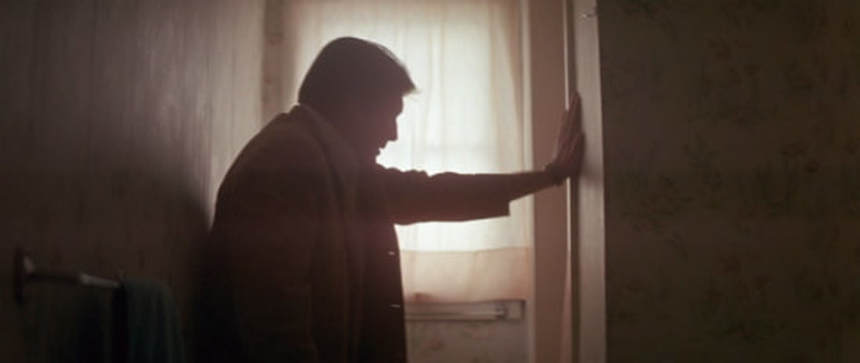|
A masterclass in minimalist, downbeat formalism, Robert Mulligan's The Nickel Ride is a meticulously crafted neo-noir full of urban paranoia and quiet menace, encapsulating a time-period in American in which the cities were going through demographic and cultural change. Centered around Cooper, a small-time criminal who has been managing a series of warehouses for the mob in Los Angeles, The Nickel Ride is a story and subtle escalation, as Cooper begins to recognize his time in this seedy, grim lifestyle is coming-to-an-end. I'm not sure I've ever seen a film set in Los Angeles with such impressionistic seediness, with The Nickel Ride's aesthetic being much more commonly seen in stories taking place in New York or Chicago, where the gloomy, grimy, gray color palette perfectly evokes the nature of the world which these characters inhabit. Constructed in a way that puts character first, The Nickel Ride's narrative never feels constrictive at all, spending the time necessary to let the audience immerse itself in the environment of Cooper; one in which petty thugs, loudmouths, and lowlifes are common place, and major business transactions take place shadowy, rundown interiors which bristle with quiet menace. Through early interactions between Cooper and various shady characters, the film informs the audience of Cooper's exact circumstances, one in which he is growing increasingly paranoid due to his inability to satisfy his boss, Carl. Cooper is a dinosaur, an outsider now in this world who made his weight in an earlier time, and as the film progresses it becomes clear that while his bosses various enforcers offer a very real physical threat to Cooper, it's the internal, existential dread inside Cooper's mind that consumes him, as he finds himself confronted and haunted with the realization that his time in this lifestyle has passed him by. The Nickel Ride's aesthetic provides plenty of seediness and impressionistic designs, yet the psychological deconstruction of Cooper as the film progresses is what engages the viewer up until the film's grim finale. The Nickel Ride is a story ripe with paranoia, one in which objective reality is occasionally subverted, exposing the viewer to the fractured, fearful psyche of Cooper, a man who knows he can't stop the seeds of change. A story about the relentless nature of cultural change and the sharp contrasts which are created, Mulligan provides subtle juxtapositions throughout the film's narrative which evoke the existential struggle of our main protagonist against larger environmental forces; the interlude being one prime example, where Cooper and his wife Sarah spend time at a cabin-in-the-woods, with the sun-soaked lake front being the perfect juxtaposition to the grey, dirty urban environment in which he came. Turner the cocky, cowboy mob enforcer is perhaps even a better example, being the perfect antagonist, the ying to Cooper's yang, a character whose inescapable, cavalier temperament goes against type by design; another decision by Mulligan which evokes the sharp contrast and changing times of this story which slowly and methodically destroys our lead character. Meticulously designed both aesthetically, narratively, and thematically, The Nickel Ride is a downbeat crime film that shouldn't be missed, delivering an immersive experience into the slowly spiraling mid-level crime boss associate whom is losing control on the space he inhabits.
0 Comments
Leave a Reply. |
AuthorLove of all things cinema brought me here. Archives
June 2023
|

 RSS Feed
RSS Feed
